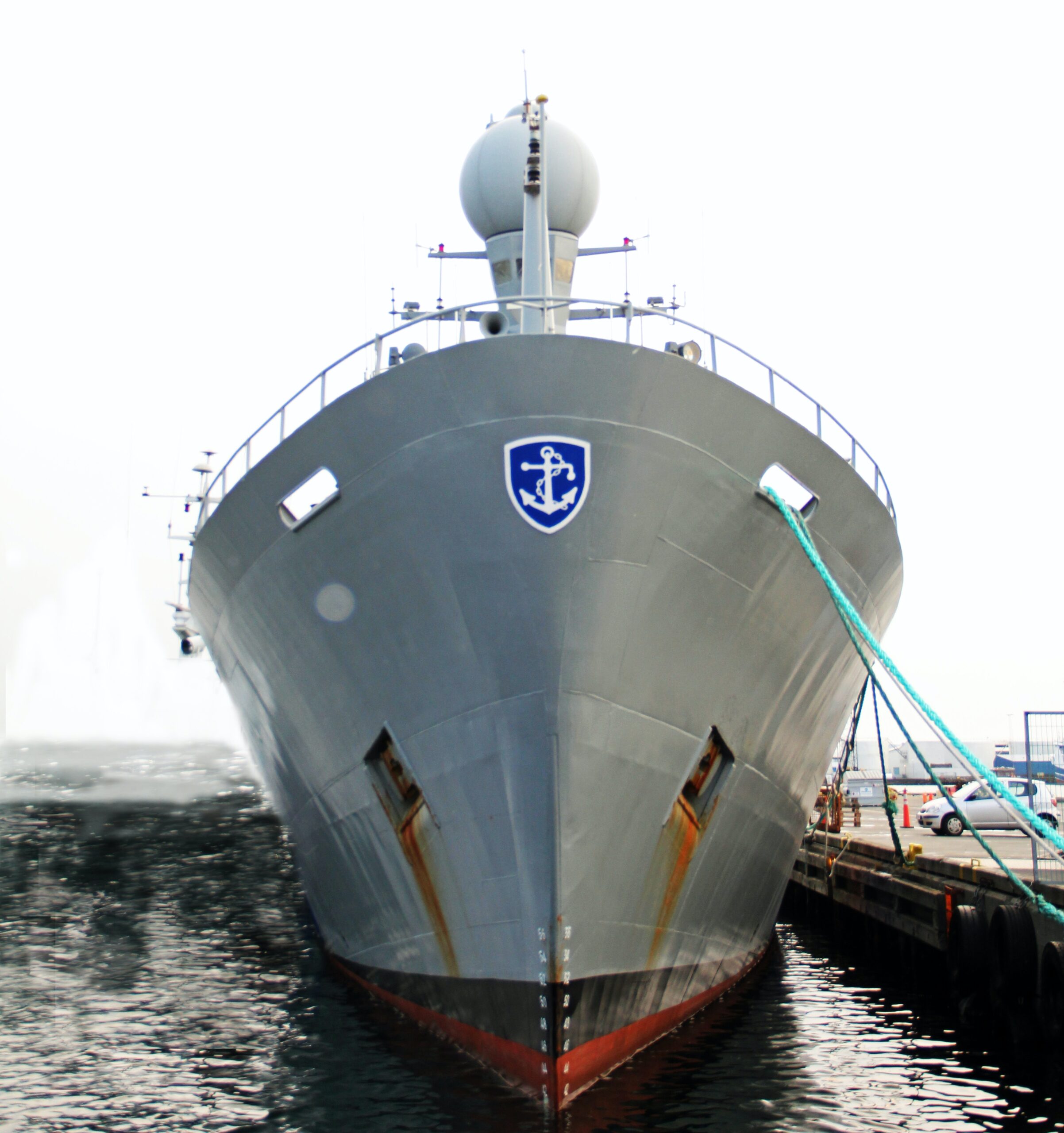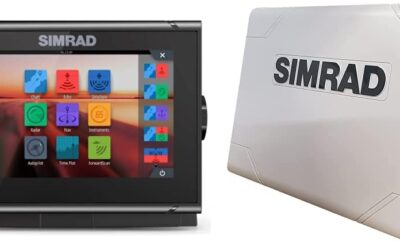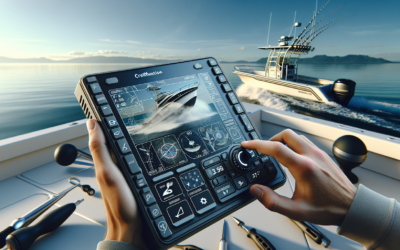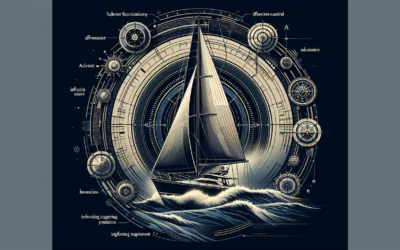Imagine exploring the mysterious depths of the ocean, peering into a world hidden beneath the waves. Have you ever wondered how we are able to capture such astonishing underwater imagery? Enter “Under The Surface: How Sonar Paints The Underwater Picture”. This groundbreaking product takes us on an incredible journey, revealing the secrets of sonar technology and how it allows us to visualize the underwater world like never before. Dive in and discover the captivating way sonar paints the underwater picture.
What is Sonar?
Definition
Sonar, short for Sound Navigation and Ranging, is a technology that uses sound waves to detect and locate objects underwater. It works by emitting sound waves and then measuring the time it takes for the waves to bounce back after hitting an object. This information is then used to create a detailed picture of the underwater environment.
History of Sonar
The history of sonar dates back to World War I when it was first developed as a military technology to detect submarines. However, its origins can be traced back even further, with the first experiments on sound navigation taking place in the late 19th century. Over the years, sonar technology has evolved and advanced, finding applications in various fields beyond the military.
Types of Sonar
There are several different types of sonar, each serving a specific purpose. The most common types include:
-
Active Sonar: This type of sonar sends out sound waves and listens for their echoes to determine the distance and location of objects. Active sonar systems are commonly used in marine navigation and fisheries.
-
Passive Sonar: Unlike active sonar, passive sonar systems only listen for sounds without emitting any signals. This type of sonar is often used for detecting and tracking marine animals, such as whales and dolphins.
-
Synthetic Aperture Sonar: Synthetic aperture sonar combines elements of active and passive sonar to create highly detailed images of the seafloor. It uses advanced signal processing techniques to generate high-resolution images, making it particularly useful for underwater mapping and archaeological surveys.
-
Multibeam Sonar: Multibeam sonar systems use multiple beams of sound waves to provide a wider coverage area and more detailed imaging of the seafloor. They are commonly used in hydrographic surveys and deep-sea exploration.
How Does Sonar Work?
Principles of Sonar
Sonar works on the principle of echolocation, which is the ability of certain animals to determine the location and distance of objects by emitting sound waves and analyzing the echoes. Similarly, sonar systems emit pulses of sound waves, usually at frequencies between 10 and 200 kHz, and then listen for the echoes that bounce back.
Echolocation
Echolocation is the process by which sonar systems determine the distance and characteristics of objects underwater. When the sound waves emitted by the sonar hit an object, they bounce back and are detected by the sonar receiver. The time it takes for the sound waves to travel to the object and back is used to calculate the distance. The strength and frequency of the returning echoes provide information about the size, shape, and composition of the object.
Sonar Systems
Sonar systems consist of three main components: a transmitter, a receiver, and a processing unit. The transmitter generates the sound waves and sends them into the water. The receiver picks up the echoes and converts them into electrical signals. Finally, the processing unit analyzes the signals and generates a visual representation of the underwater environment.

Applications of Sonar
Marine Navigation
One of the most widespread applications of sonar is in marine navigation. Sonar systems are commonly used on ships and submarines to determine the depth of the water, detect underwater hazards, and create detailed maps of the seafloor. This information is crucial for safe navigation and avoiding collisions.
Fisheries and Aquaculture
Sonar plays a vital role in fisheries and aquaculture by helping fishermen locate schools of fish and determine their abundance. By using sonar, fishermen can save time and resources by precisely targeting the areas with the highest fish concentrations. In aquaculture, sonar is used to monitor fish pens and cages, ensuring the health and safety of farmed fish.
Oil and Gas Industry
The oil and gas industry relies on sonar for various applications, such as underwater pipeline inspection, offshore platform maintenance, and seabed surveys. Sonar systems are used to detect and locate leaks, monitor environmental conditions, and assess the integrity of infrastructure. This helps ensure the efficient and safe operation of offshore oil and gas installations.
Search and Rescue
Sonar technology plays a crucial role in search and rescue operations, especially in locating and recovering submerged objects or individuals. Sonar systems are capable of scanning large areas of water quickly and providing detailed imaging of the underwater environment, helping rescuers identify potential targets and plan effective search strategies.
Military Applications
Sonar technology has extensive military applications, particularly in submarine warfare and anti-submarine warfare. Sonar systems are used to detect, track, and classify enemy submarines, as well as underwater mines and other potential threats. Additionally, sonar is employed for ocean surveillance, underwater communications, and intelligence gathering.
Archaeology
Sonar has revolutionized underwater archaeology by enabling the discovery and exploration of submerged archaeological sites. Sonar systems, particularly side-scan sonar and synthetic aperture sonar, can create high-resolution images of the seafloor, allowing archaeologists to locate and study ancient shipwrecks, submerged cities, and other artifacts.
Underwater Mapping
Sonar technology is widely used for underwater mapping, providing detailed information about the topography, composition, and geology of the seafloor. By using multibeam or synthetic aperture sonar systems, scientists and researchers can create accurate maps for various purposes, including environmental monitoring, resource exploration, and marine spatial planning.
Advancements in Sonar Technology
High-Resolution Imaging
Advancements in sonar technology have led to the development of high-resolution imaging systems. These systems utilize advanced signal processing techniques to improve the clarity and detail of underwater images. High-resolution sonar is crucial for archaeological surveys, habitat mapping, and other applications that require precise imaging of the underwater environment.
3D Sonar
Traditional sonar systems primarily provide two-dimensional images of the seafloor. However, 3D sonar technology allows for a more immersive and comprehensive visualization of the underwater environment. It provides a three-dimensional representation of the seafloor and objects, enhancing the accuracy and realism of underwater mapping and exploration.
Multibeam Echo Sounders
Multibeam echo sounders are advanced sonar systems that utilize multiple beams of sound waves to cover a wider area and capture more data simultaneously. This results in faster and more efficient underwater surveys, particularly in deep-sea or large-scale mapping projects. Multibeam echo sounders provide detailed bathymetric data and are widely used in oceanographic research, hydrographic surveys, and offshore construction.
Side-Scan Sonar
Side-scan sonar systems produce detailed images of the seafloor by emitting sound waves at angles to the side of the sonar device. These systems are highly effective in detecting and imaging underwater objects, such as wrecks, debris, or geological features. Side-scan sonar has significant applications in marine archaeology, offshore infrastructure inspection, and underwater search and recovery operations.
Forward-Looking Sonar
Forward-looking sonar is a specialized sonar system that provides real-time imaging ahead of the vessel or underwater vehicle. This allows operators to see obstacles or hazards in the path and make informed decisions to avoid them. Forward-looking sonar is particularly valuable in navigation, underwater exploration, and autonomous underwater vehicle operations.
Doppler Sonar
Doppler sonar systems utilize the Doppler effect to measure the speed and direction of underwater objects in relation to the sonar device. This technology is commonly used in oceanography, fisheries research, and underwater vehicle navigation. Doppler sonar enables scientists and researchers to study ocean currents, fish behavior, and other dynamic processes in the underwater environment.
Underwater Robotics and Autonomous Systems
Advancements in sonar technology have played a crucial role in the development of underwater robotics and autonomous systems. Sonar sensors are integrated into underwater vehicles, such as remotely operated vehicles (ROVs) and autonomous underwater vehicles (AUVs), to provide them with the ability to navigate, map the seafloor, and gather scientific data autonomously. These systems are used in various applications, including scientific research, environmental monitoring, and underwater inspections.
Challenges and Limitations of Sonar
Signal Interference
Sonar signals can be affected by various forms of interference, such as water turbulence, thermal layers, or other acoustic sources. These interferences can distort or attenuate the sonar signals, leading to degraded imaging quality or reduced detection range. Advanced signal processing techniques and adaptive sonar systems are being developed to mitigate signal interference and improve sonar performance.
Shallow Water Operation
Sonar systems face challenges when operating in shallow water environments, such as coastal areas or rivers. Shallow water introduces additional complexities due to the interaction of sound waves with the seafloor, coastal structures, and vegetation. This can result in reduced clarity of underwater images and difficulties in detecting small objects or features. Researchers and engineers are continuously working on developing specialized sonar systems and algorithms to overcome these challenges and enhance shallow water sonar capabilities.
Underwater Obstacles
Navigating through underwater obstacles, such as reefs, wrecks, or dense vegetation, can pose challenges for sonar systems. These obstacles can create acoustic shadows, where the sound waves are blocked or reflected in unpredictable ways. As a result, the accuracy and reliability of sonar imaging can be compromised. Advanced obstacle avoidance algorithms and real-time processing techniques are being developed to improve the performance of sonar systems in complex underwater environments.
Environmental Impact
While sonar technology has numerous benefits, it can also have potential environmental impacts. The use of powerful sound waves in sonar can disturb or harm marine life, particularly sensitive species such as marine mammals and fish. Studies are being conducted to better understand the potential impact of sonar on marine ecosystems and develop guidelines or regulations to minimize the negative effects.
Sonar and Marine Life
Sonar signals can interfere with the natural behaviors and communication of marine animals. High-intensity sonar, in particular, has been known to cause behavioral changes, strandings, or even fatalities in marine mammals. Efforts are underway to implement mitigation measures, such as reducing sound levels and avoiding sensitive areas, to minimize the impact of sonar on marine life.
Legal and Ethical Considerations
The use of sonar, particularly in military applications, raises legal and ethical concerns. Uncontrolled or indiscriminate use of sonar systems can have negative consequences, such as disturbance of marine protected areas, violations of international regulations, or invasion of privacy. Striking a balance between the benefits and potential harms of sonar technology requires careful consideration of legal frameworks, ethical guidelines, and responsible use practices.
Sonar in Marine Research
Oceanographic Studies
Sonar technology plays a crucial role in oceanographic studies, providing scientists with valuable data about the physical and biological properties of the ocean. Sonar systems are used to measure ocean currents, map the distribution of marine life, study the behavior of marine animals, and investigate the impact of climate change on the oceans. This data is essential for understanding and managing marine ecosystems and resources.
Marine Biology and Ecology
Sonar is widely used in marine biology and ecology research to study marine organisms and their habitats. Sonar systems help researchers locate and track marine animals, map underwater habitat structures, and assess population densities. By using sonar, scientists can gain insights into the behavior, migration patterns, and interactions of marine species, contributing to the conservation and sustainable management of marine ecosystems.
Climate Change Research
Sonar technology plays a significant role in climate change research by providing data on various aspects of the oceans’ response to global warming. Sonar systems are used to measure changes in ocean temperature, salinity, and circulation patterns, helping scientists understand the impacts of climate change on marine ecosystems and the Earth’s climate system as a whole.
Geological Surveys
Sonar is a valuable tool for conducting geological surveys of the seafloor and underwater geological structures. It allows scientists to map underwater geological features, such as seamounts, ridges, and trenches, and study processes like sediment transport and erosion. Sonar data is crucial for identifying potential geohazards, assessing the availability of mineral resources, and understanding the geological history of the Earth’s crust.
Deep-Sea Exploration
Sonar technology has revolutionized deep-sea exploration by enabling scientists to explore and study the most inaccessible parts of the ocean. Sonar systems, particularly multibeam echo sounders and synthetic aperture sonar, provide detailed mapping and imaging capabilities that help researchers discover and investigate unknown deep-sea habitats, hydrothermal vents, and unique geological formations.
Future Developments in Sonar Technology
Miniaturization
Advancements in sonar technology are leading to the miniaturization of sonar systems. Smaller and more compact sonar devices are becoming available, enabling their integration into smaller underwater platforms, such as drones or gliders. This miniaturization opens up new possibilities for underwater exploration, research, and monitoring in confined or hard-to-reach areas.
Increased Sensitivity and Range
Future developments in sonar technology aim to increase the sensitivity and range of sonar systems. By improving the signal detection capabilities and extending the range of sound waves, researchers can gather more accurate data over larger areas. This will enable scientists to study underwater environments in even greater detail and explore previously uncharted territories.
Integration with Other Technologies
Sonar technology is increasingly being integrated with other technologies to enhance its capabilities and applications. For example, combining sonar with optical imaging or laser scanning can provide a comprehensive view of underwater environments, including the identification of fine-scale features and the characterization of biological communities. The integration of sonar with robotics, artificial intelligence, or virtual reality technologies also holds great potential for advancing underwater exploration and research.
Real-Time Data Processing
Advancements in data processing capabilities are driving the development of real-time sonar imaging and analysis. This allows users to obtain immediate feedback and insights from the sonar data, enabling faster decision-making and response. Real-time data processing is particularly valuable in applications such as underwater inspections, navigation, and search and rescue operations.
Artificial Intelligence and Machine Learning
Artificial intelligence (AI) and machine learning techniques are being applied to sonar data analysis to improve accuracy, interpretation, and automation. AI algorithms can help to identify and classify underwater objects, detect anomalies or changes in the environment, and optimize sonar system performance. By leveraging AI and machine learning, researchers can extract valuable information from sonar data more efficiently and effectively.
Improved Underwater Imaging
Advancements in sonar technology are focused on improving the quality and resolution of underwater imaging. Higher-frequency sonar systems with enhanced imaging capabilities are being developed, allowing for the visualization of finer details and the identification of smaller objects. This will contribute to more precise underwater mapping, archaeological research, and habitat monitoring.
Safety Considerations
Underwater Noise Pollution
The use of sonar can contribute to underwater noise pollution, which can have negative impacts on marine life. High-intensity sonar signals can disorient or disturb marine animals, affecting their behavior, communication, and feeding patterns. Efforts are being made to develop quieter sonar systems and establish guidelines or regulations to mitigate the effects of underwater noise pollution on marine ecosystems.
Collision Avoidance
Sonar technology plays a crucial role in collision avoidance for ships, submarines, and underwater vehicles. By providing real-time imaging and detection capabilities, sonar systems help operators navigate safely and avoid collisions with underwater obstacles or other vessels. Continuous advancements in sonar technology aim to improve collision avoidance systems, enhancing safety in marine environments.
Regulations and Guidelines
The use of sonar, particularly in sensitive areas or for certain applications, is regulated by national and international guidelines and regulations. These regulations aim to minimize the impact of sonar on the environment, protect marine life, and ensure responsible use of the technology. Compliance with these regulations is essential to safeguard the underwater environment and promote sustainable practices.
Conclusion
Sonar technology has revolutionized our understanding of the underwater world and has found numerous applications across various fields. From marine navigation to scientific research, sonar plays a crucial role in mapping the seafloor, detecting underwater objects, and studying marine ecosystems. Advancements in sonar technology, such as high-resolution imaging, 3D sonar, and underwater robotics, continue to push the boundaries of exploration and research. However, it is important to address the challenges and limitations of sonar technology, such as signal interference and environmental impact, to ensure its responsible and sustainable use in the future. By combining innovation, scientific knowledge, and ethical considerations, sonar technology will continue to paint a comprehensive picture of the underwater world, fostering the discovery and conservation of our precious marine resources.












